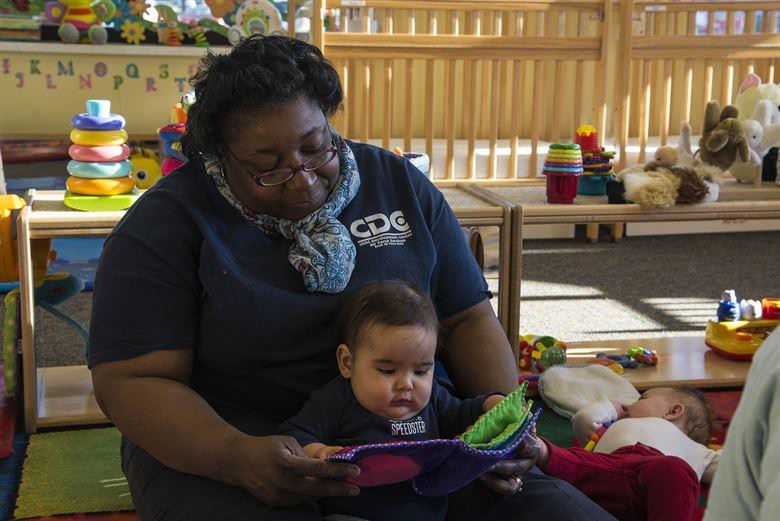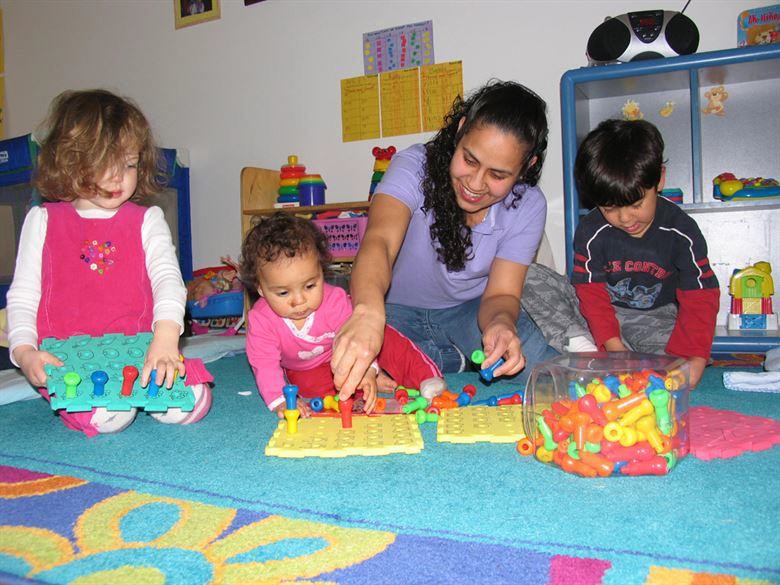43 Child Care
According to the U.S. Census Bureau in 2011, over sixty percent of families with children under five relied on regular child care arrangements. Around a quarter of those families used organized child care facilities as their primary arrangement.[1]
Child care involves supervising a child or children, usually from infancy to age thirteen, and typically refers to work done by somebody outside the child’s immediate family. Child care is a broad topic covering a wide spectrum of contexts, activities, social and cultural conventions, and institutions. The majority of child care institutions that are available require that child care providers have extensive training in first aid and are CPR certified. In addition, background checks, drug testing, and reference verification are normally required.
It is traditional in Western society for children to be cared for by their parents or their legal guardians. In families where children live with one or both of their parents, the child care role may also be taken on by the child’s extended family. If a parent or extended family is unable to care for the children, orphanages and foster homes are a way of providing for children’s care, housing, and schooling.
Child Care in the United States
Formal child care options include center-based care and family child care homes. Each state has different regulations for licensing child care centers, including teacher requirements. In some states, teaching in a child care center requires an associate’s degree in child development. States with quality standards built into their licensing programs may have higher requirements for support staff, such as teacher assistants. Head Start (a federally funded child care program for income qualified families) lead teachers must have a bachelor’s degree in Early Childhood Education. States vary in other standards set for daycare providers, such as teacher to child ratios.

State legislation may regulate the number and ages of children allowed before the home is considered an official family child care program and subject to licensing regulations. Often the nationally recognized Child Development Associate credential is the minimum standard for the individual leading this home care program.

In addition to these licensed options, parents may also choose to find their own caregiver or arrange childcare exchanges/swaps with another family. This care is typically provided by nannies, au pairs, or friends and family. The child is watched inside their own home or the caregiver’s home, reducing exposure to outside children and illnesses. Depending on the number of children in the home, the children utilizing in-home care can enjoy the greatest amount of interaction with their caregiver and form a close bond.
There are no required licensing or background checks for this type of in-home care, making parental vigilance essential in choosing an appropriate caregiver. The cost of in-home care is the highest of childcare options per child, though a household with many children may find this the most convenient and affordable option.[2]
In this video, Dr. Boise reviews types of child care.
- Who's Minding the Kids by the U.S. Census Bureau is in the public domain; ↵
- Lifespan Development - Module 4: Infancy by Lumen Learning references Psyc 200 Lifespan Psychology by Laura Overstreet, licensed under CC BY 4.0 ↵

